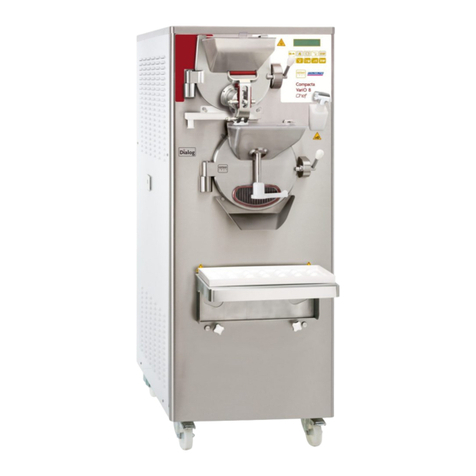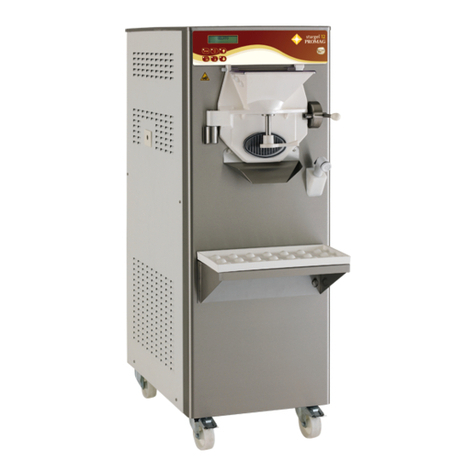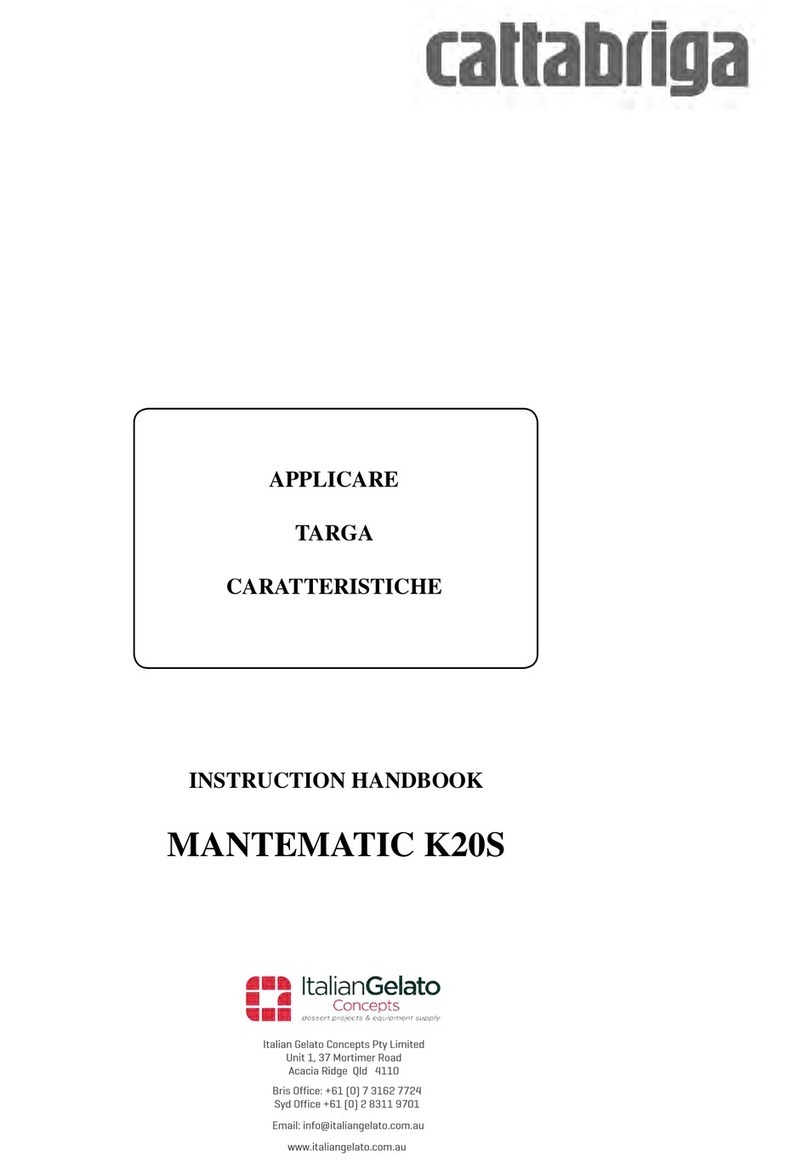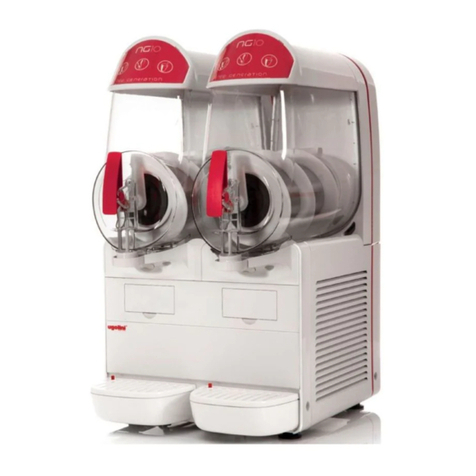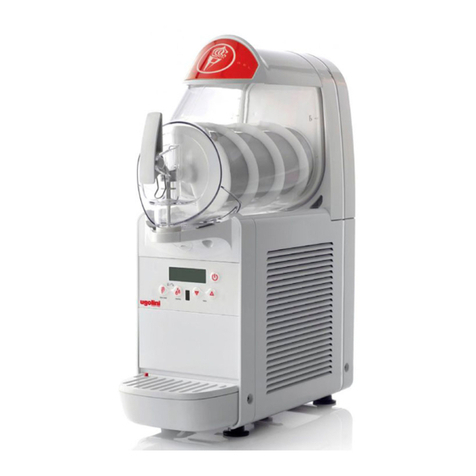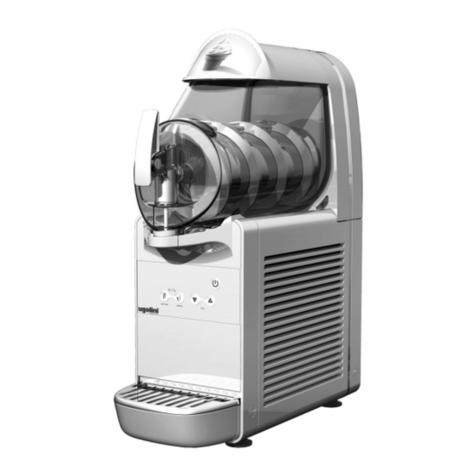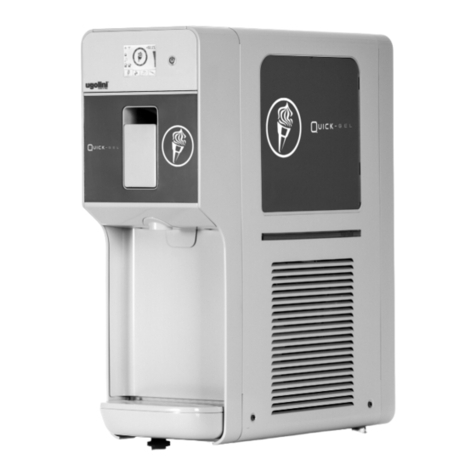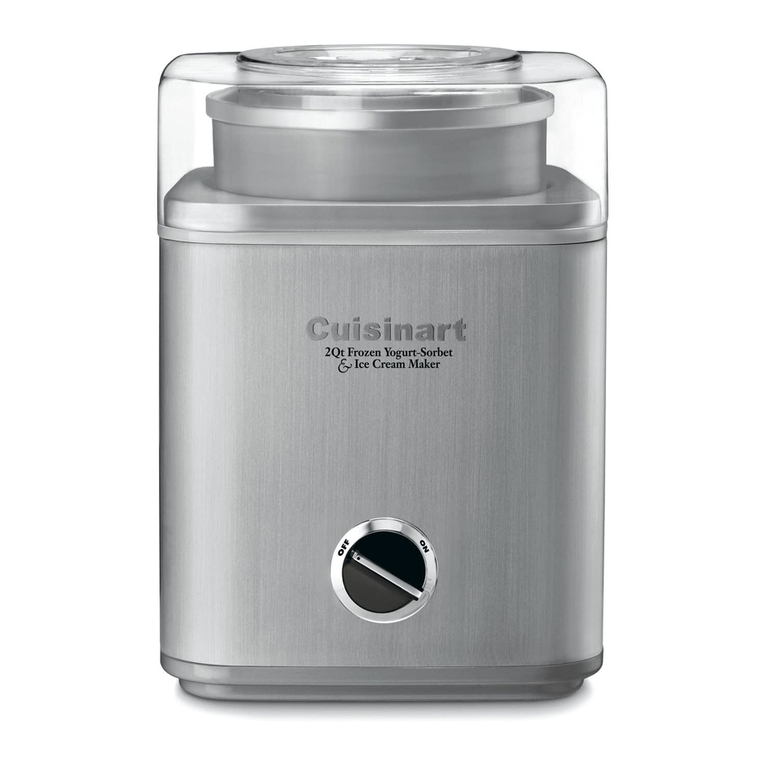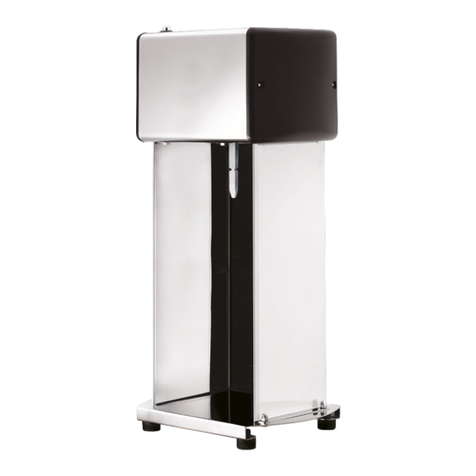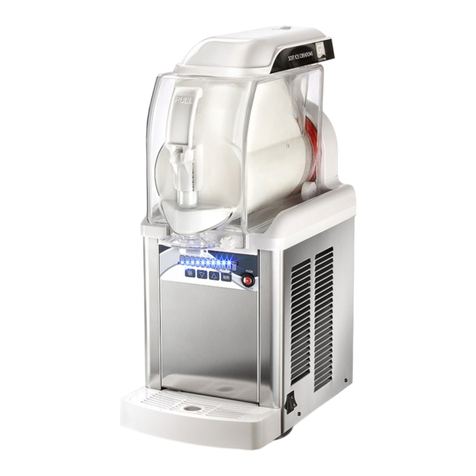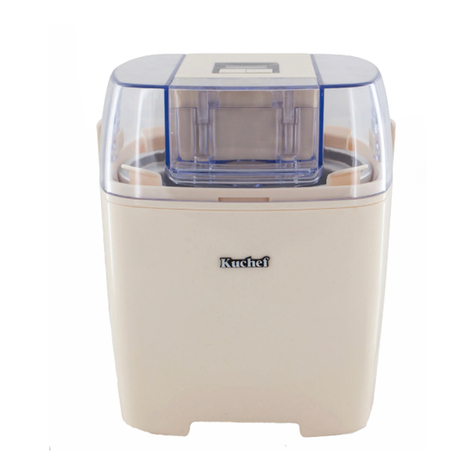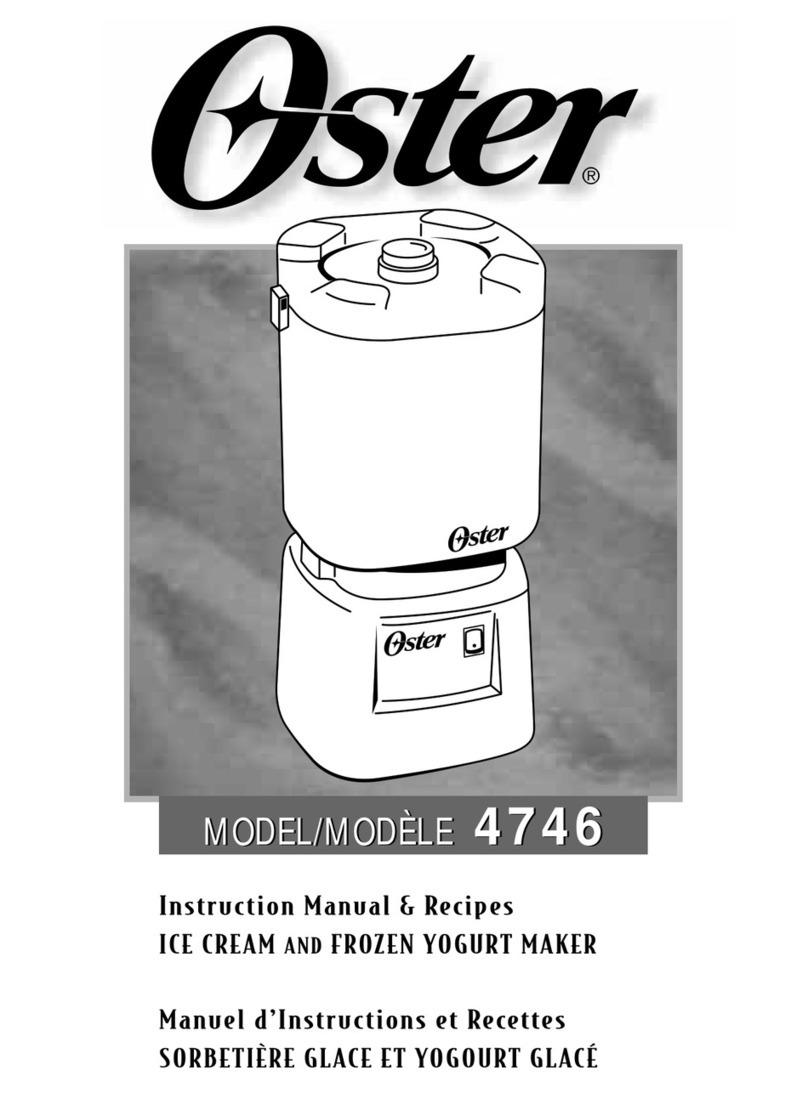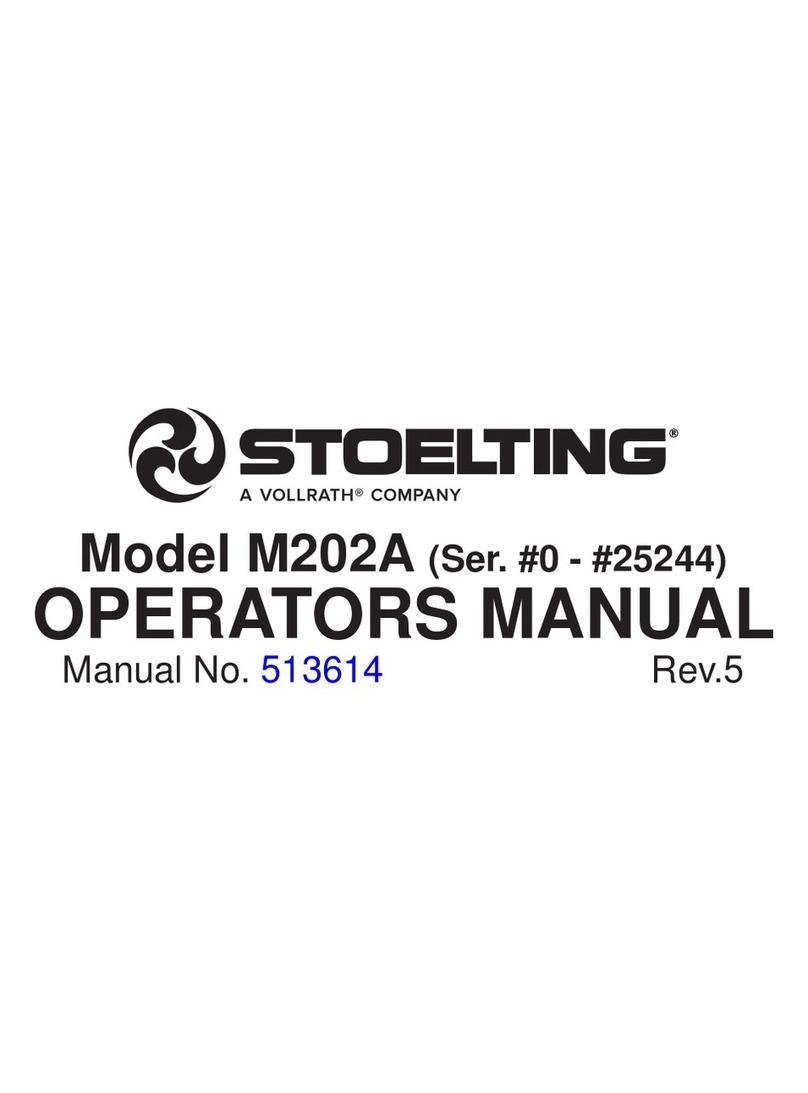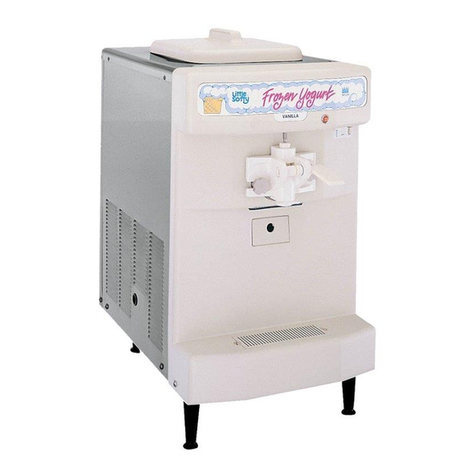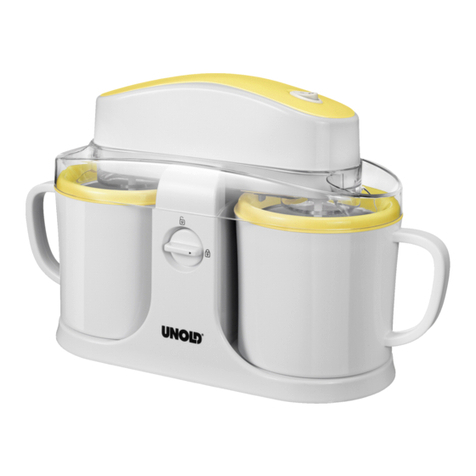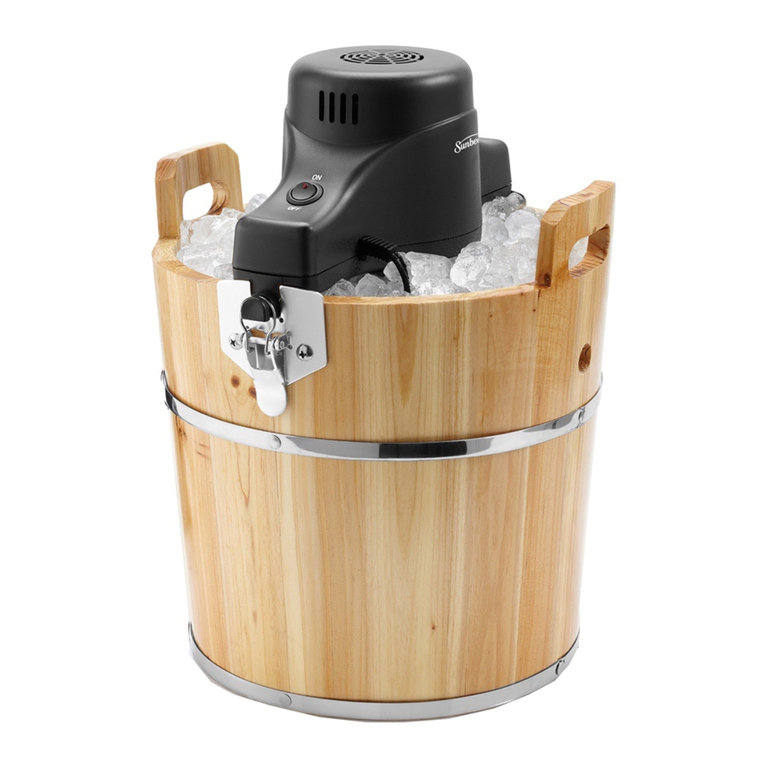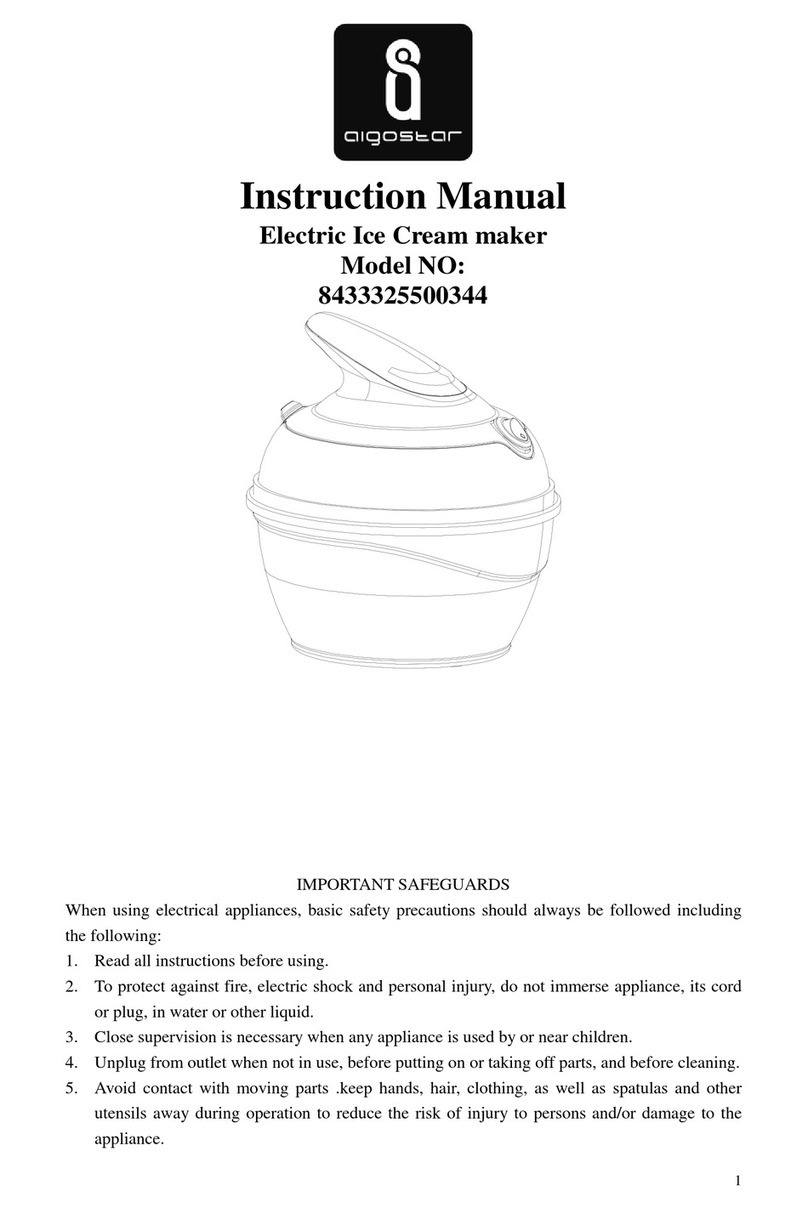
17
prevent damage to the dispenser, both cooling and the mixer
are stopped for 90 seconds and the display shows the mesage
PAUS. After 90 seconds, both mixing and cooling are restarted
and the previous density setting is reduced by one level.
7. 2. 1 DEFROST TIMER
This machine has a defrost timer that automatically switches the
operating mode from ICE CREAM or CRUSHED-ICE DRINK
PREPARATION to PRODUCT STORAGE and vice versa. This
means that during the defrost periods the ice cream or crushed-
ice drink will be set to the storage temperature and, at the end
of this period, the product will be automatically regulated to the
density set in PREPARATION mode.
7. 3 OPERATION HELPFUL HINTS
1The time required to obtain the cooling of the product varies
depending on several factors such as the ambient temperature,
the initial temperature of the product, its sugar content (degrees
Brix) and fat content and the density adjustment.
2Topping up the containers with product that is already pre-
cooled further increases the efficiency of the dispenser.
3To further reduce recovery time and thus increase the
autonomy of the dispenser, fill up the tanks when the level of
product has fallen to the halfway point of the evaporator.
4To store the product correctly, the distributor must also
operate at night, at least in the PRODUCT STORAGE position.
5Night operation in the PRODUCT STORAGE position also
eliminates the possible formation of ice (due to condensation of
atmospheric moisture) on the outside of the containers.
6Never turn off the dispenser when there is product in the
containers. If not cooled, the product may deteriorate.
Furthermore, unless it is mixed, it may stick together and form
blocks of ice. If the mixer is restarted in these conditions
(without waiting for the ice to melt), the dispenser may be
damaged.
7All dispensers of this kind must emit heat. If, however, this
emission seems excessive, check that no source of heat is
located near the dispenser itself and, in particular, near the grid
panels. Also make sure that the airflow is not impeded by the
proximity of walls, boxes or similar. Leave at least 15 cm free
space around the dispenser. Finally, check that the filter
located below the rear panel is clean.
8The product is for use with confectionery only.
7. 4 CLEANING
1Cleaning and washing are essential to guarantee the
perfect preservation of the taste of the product and the
maximum efficiency of your dispenser. The procedures
OPERATION ENABLING
IMPORTANT
Before using it, the defrosting timer must pre-
viously be enabled for the operation by set-
ting the regulation parameter PA09 to ON.
To perform this operation, do as follows:
- Start the machine in Service Mode by enabling the main
switch and keeping pressed key A.
- Press keys C and D at the same time to display the Para-
meter Regulation Mode. PA01 appears on the display.
- Press key C several times, until parameter PA09 is di-
splayed.
- Press key A to enable the change of this parameter. The di-
splay shows message OFF.
- Press key C, the display shows message ON.
- Press key A again to confirm the value and come back to
the parameter list.
To quit the parameter regulation, press keys C and D at the
same time or do not press any other key for three seconds.
SETTING THE CURRENT TIME AND TIMER
In order to set the defrost timer, start up the machine in
Service mode. To do this, turn on the on/off switch with the
A key pressed. The M symbol on the display will indicate that
this mode is enabled.
The current time and defrost periods can only be set and the
defrost timer enabled and disabled when the machine is in
Stand-by mode.
SETTING THE TIME
First of all, set the current time. To do this press the C
and D keys at the same time. You will then be prompted
to set the hours, the minutes and the display format (12
/ 24 hours). The H and E keys are used to set the current
value and the B key is used to confirm the setting.
SETTING THE DEFROST PERIODS
Having set the current time, you can set the desired de-
frost periods. To do this, press the H and E keys at the
same time. The display will show the time 00:00 and the
F or G indicators will indicate the operating modes set
for the time displayed. By pressing the E and H keys you
can change the operating mode while, by pressing the
C and D keys, you can increase or decrease the time in
steps of 15 minutes. In this way, you can set the opera-
ting mode of the machine over a period of 24 hours. Ha-
ving made this setting, you can confirm and exit from
regulation mode by pressing the A key.
ENABLING AND DISABLING THE DEFROST TIMER
The defrost timer can be enabled or disabled in Stand-by
Mode and pressing the H key for 5 second. When the
symbol V is on the display, the defrost timer is enabled. If the
machine is started up with the timer enabled, it will not be
possible to select the operating mode manually as it will be
selected automatically at the preset time.
All the settings of the current time, the defrost periods and
the enabling / disabling of the timer are stored and remain
active after the machine has been turned off and then on
again even if it is started in normal operating mode.
ATTENTION
The access to the service area is restricted to persons
having safety/hygiene knowledge and practical expe-
rience on the appliance.

